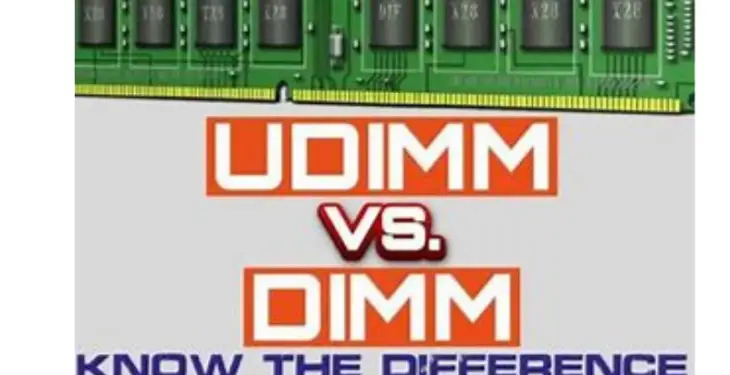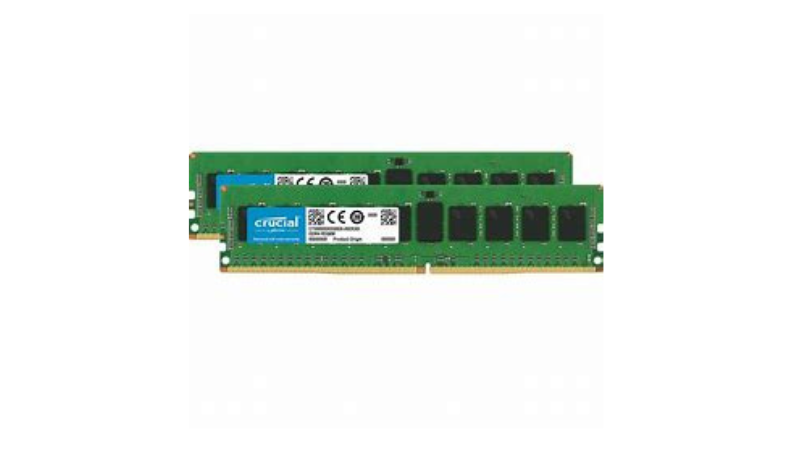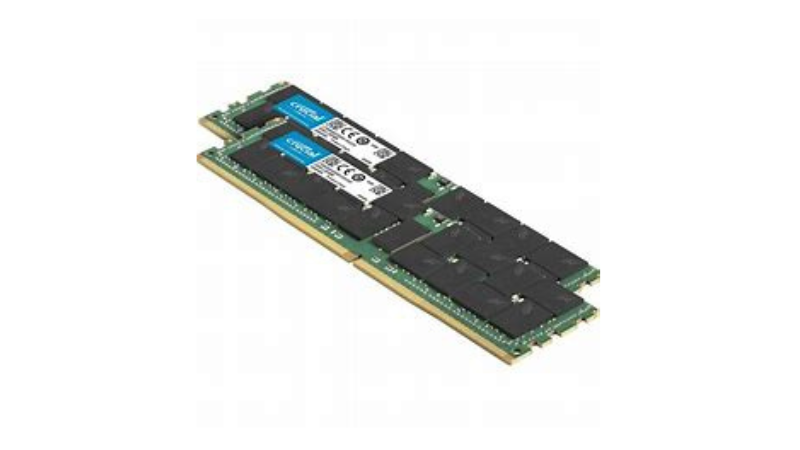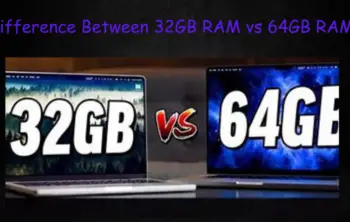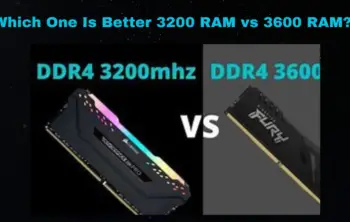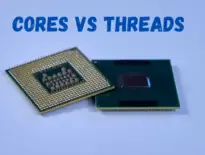The difference between UDIMM VS DIMM is that they both are two types of computer memory modules commonly used in desktop computers. Both types of memory modules serve the same purpose, which is to store data and instructions in a computer’s RAM (Random Access Memory). The main difference between the two lies in their buffering.
A DIMM is a type of RAM that has been buffered. This means that it contains additional circuitry to improve its performance, such as better compatibility with the CPU and system bus. Buffered DIMMs are usually more expensive than unbuffered ones, but they tend to offer higher performance and more reliable operation.
In contrast, a UDIMM is an unbuffered type of RAM module. As such, it does not contain any additional circuitry or components to improve its performance. It is typically less expensive than a buffered DIMM, but it also offers lower performance and may be less reliable in certain applications.
When choosing between a UDIMM VS DIMM for your computer’s RAM, you should consider your budget as well as the type of applications you intend to use the memory for. If you are using your computer for gaming or other intensive tasks where speed and reliability are important, then a buffered DIMM may be a better choice. On the other hand, if you are on a tight budget and do not require high-end performance from your computer’s RAM, then an unbuffered UDIMM may suffice.
Read Article: Difference Between Cores vs Threads
Both types of memory modules serve the same purpose: they provide storage space for data and instructions within your computer’s RAM. Which type you choose depends largely on what kind of tasks you plan to perform with your computer and how much money you have available to spend on RAM upgrades.
Can I Use UDIMM Instead Of DIMM?
Yes! one can insert DIMM RAM in UDIMM slots only when both are of the same type i.e. DDR1/2/3/4/5. The main difference between UDIMM and DIMM is that UDIMM slots are generally not keyed, while DIMM slots are keyed so that only compatible memory modules can be inserted.
Is UDIMM Same As DIMM?
Dual in-line memory modules (DIMMs) are a type of computer memory module that use two parallel memory channels to improve performance. Unbuffered DIMMs (UDIMMs) and registered DIMMs (RDIMMs) are the two types of DIMMs.
UDIMMs are not buffered, which means that they do not include any electrical or mechanical components that would regulate the flow of electricity between the module and the motherboard. This can cause problems if there is too much electrical noise on the motherboard or if the modules are not seated properly in their sockets.
DIMMs include these components, which help to regulate the flow of electricity and minimize electrical noise. This can help to improve performance and stability, especially when using multiple DIMMs.
Basic Difference Between UDIMM vs DIMM
Performance of UDIMM VS DIMM
Registers inside the UDIMM are used to buffer addresses, command lines, and clocks, while data goes directly to and from the memory controller and DRAM chips. This improves signal integrity and reduces the electrical load on the memory controller, allowing the system to support more server RAM capacity and maintain its stability. In addition, UDIMM features include parity detection. Once a problem is detected with the address and control signals through the registers, the UDIMM will reply with the error signal to the memory controller.
In contrast, the DIMM does not have any buffers or registers configured and passes all instructions from the memory controller directly to the DRAM chip. Without buffers, addresses, and control signals, this can somewhat increase the electrical load on the memory controller. As a result, DIMM-enabled systems will only be able to handle a limited number of DIMMs. Compared to DIMM, UDIMM lacks parity error detection. The memory controller can only detect address and control signal errors after a certain period if there is an internal component that has been damaged.
Bandwidth and Latency of UDIMM VS DIMM
UDIMM provides extra clock cycles and more power, resulting in higher latency and less bandwidth. And when multiple DIMMs is present within each server memory channel, the clock cycles of the UDIMM change, like the DIMM, resulting in higher latency and less bandwidth. Doubling the individual clock cycles to allow for build-time also makes UDIMM have higher latency and less bandwidth than UDIMM. As a result, the superior performance of UDIMM becomes apparent when there are three or more DIMMs per server memory channel. UDIMM is limited to a maximum of two DIMMs per server memory channel.
Applications of UDIMM VS DIMM
As mentioned earlier both memory modules present performance with a small power load in the memory controller. So it can be concluded that DIMM offers better stability, scalability, and reliability than UDIMM. However, powerful performance is also a bit more expensive. Therefore, DIMM is mainly applied to high-end servers that require high capacity and high-performance server RAM. UDIMM is mostly applied in systems with lower memory requirements, such as our PCs and desktops.
Specifications of UDIMM VS DIMM
In terms of specifications, some of the advanced specifications for UDIMM and DIMM are similar. For example, speed is measured in megabits per second (MT/s) transfers on the server memory channel.
The key specification for RCDs on UDIMMs is related to clock timing since the primary function of the RCD is to re-buffer clocks and send them to the DRAM chip. The DIMM, on the other hand, has a single RCD and requires multiple data buffers to buffer the incoming DQ and DQS signals between the memory controller and the DRAM. In a DIMM, the address bus of the RCD and the incoming clock is unidirectional from the server memory controller to the DIMM. In contrast, UDIMM is bidirectional.
Design Notes of UDIMM VS DIMM
Generally viewed as the best choice for memory-intensive servers, UDIMMs use memory buffers to reduce the electrical load of columns to a single load, which can allow up to 8 columns to exist on a single DIMM module. Inevitably, of course, systems using UDIMM increase power consumption and latency while configuring the largest possible server RAM capacity.

